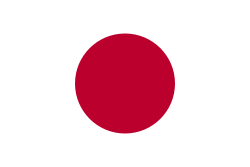Japan Unveils Advanced Railgun to Counter Hypersonic Missiles
 Japan
JapanTomiko Itooka, recognized as the world's oldest person, has passed away at the age of 116. She died on December 29 at a nursing home in Ashiya, Japan, where she had lived since 2019. Born on May 23, 1908, in Osaka, Itooka celebrated her 116th birthday just last August.
Itooka had a family of four children and five grandchildren, and she was known for her resilience, having lived through significant historical events, including world wars and pandemics. In a statement, Ashiya's mayor, Ryosuke Takashima, expressed gratitude for the courage and hope Itooka inspired during her long life.
With her passing, Japan's demographic challenge remains in focus, as the nation continues to face an aging population. As of September, over 95,000 individuals in Japan were centenarians, with women constituting 88% of that number. Nearly a third of Japan’s 124 million people are now aged 65 or older.
 Japan
Japan Japan
Japan Japan
Japan